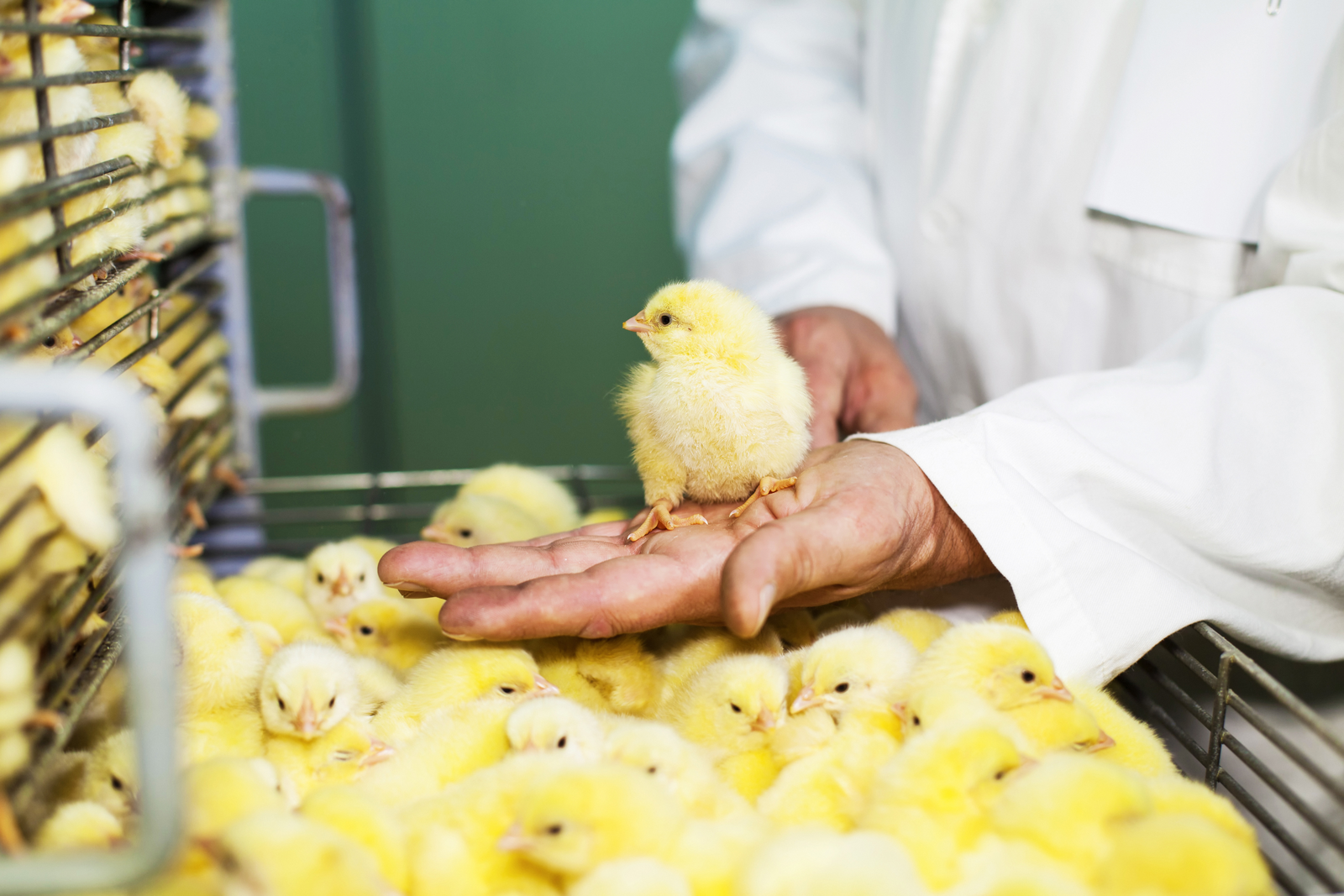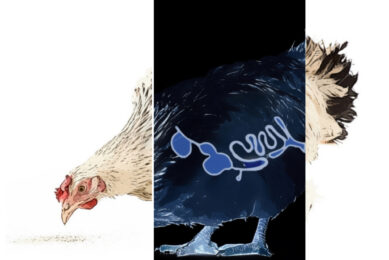Butyric acid: The crucial link

Short chain fatty acids (SCFA) positively affect the microbiota and modulate immune responses in the gut. SFCA can also offer a way to resist or limit the effects of a Salmonella infection.
SCFAs are organic acids produced naturally by the body as by-products when dietary fibre and indigestible saccharides in the large intestine are fermented by the microbiota – bacteria, viruses and fungi that colonise the gastrointestinal system. Of the common SCFAs, butyrate has perhaps been the most studied, being the preferred metabolite for colonocytes. Butyrate is taken up the epithelial cells and provides a source of ATP, which transports energy, when it is oxidised within the cell. This energy drives a sodium pump which maintains the osmotic balance in the gut, allowing water to be absorbed and the relatively liquid digesta to be turned into more solid feacal matter.
This process of energy production as butyrate is used up to produce ATP, consumes oxygen and results in the production of carbon dioxide. This oxygen depletion makes the epithelium a hypoxic (low oxygen) environment. In turn, the gut lumen becomes more anaerobic, thus favouringthe clostridial bacteria that are important in endogenous butyrate production. In other words, a virtuous positive feedback loop is created.
Salmonella as a pathogen
It has been shown that both Salmonella typhimurium infection and antibiotic treatment cause depletion of the clostridial bacteria that are most important in preventing expansion of commensal E. coli and maintaining ‘balance’ in the microbiota. The effect of this is for the colonocytes to switch to produce more energy from glucose and glucose fermentation conserves oxygen in the cell. As a result of this oxygen conservation, the oxygen levels of the epithelium rise and oxygen diffuses into the gut lumen. An increasing level of oxygen in the lumen encourages more aerobic bacteria, such as Salmonella to increase, with shedding of the pathogen in high numbers and the potential for transmission to other animals kept in the same environment. When antibiotic treatment is given, it can also destroy clostridial bacteria and the same mechanism takes place, with the result of increasing S. typhimurium populations and increasing bacterial shedding.
Another layer of complexity is the influence of virulence factors. Virulence factors contribute to the pathogenicity of an organism and are molecules that enable either colonisation, such as cell attachment, or assist evasion of the host’s immune defences. In the case of S. typhimurium, the virulence factors play a role in depleting the butyrate-producing clostridia.
Opportunities to supplement the levels of endogenous butyrate might offer a way to resist or limit the effects of Salmonella infection. The options are to support the beneficial bacterial population using pre or probiotics, or to supplement SCFAs direct using coated forms or esters. Tributyrin is an esterified form of butyrin combining the butyrate molecule with glycerol: the bond between the two resists digestion in the stomach, only being broken down by intestinal pancreatic lipase to release butyric acid. Tributyrin supplementation is shown to increase the clostridial population and restore the epithelial hypoxia needed to blunt expansion of aerobic Salmonella.
Butyrate and immunity
It is important to appreciate the specifics of how butyrate can support health in the face of bacterial challenges and restore the equilibrium of the microbiota when it is upset by antibiotics. But the effects of butyrate on the immune system are potentially even more exciting for anyone involved in animal production. The gut is the largest immunologically active organ. SCFAs don’t just play a role in intestinal homeostasis but also act as a vital link between microbiota and host immunity. They play a role in many cellular processes, such as gene expression (the process which determines which of the information encoded in the gene is ultimately used in the synthesis of a particular product – usually a bioactive protein), proliferation (increases in cell numbers) and apoptosis – the process of cell death.
The immune system is made up of innate responses (the ones that the animal is born with) and adaptive responses (the immunity acquired after birth). The innate system responds quickly and the response is similar each time and not specific, for example, to a particular microorganism. Adaptive or acquired immunity relies on activation by the innate immune system and includes specific responses such as antibody formation to individual microorganisms. Innate immunity includes physical epithelial barriers, such as the intestinal cells; sentinel cells such as macrophages and chemical messengers.

Butyrate has been shown to increase the proliferation of normal gut cells and inhibit the growth of abnormal cells in the intestinal epithelium, one of the important defensive barriers in innate immunity. A shift to more aerobic energy metabolism in abnormal cells allows butyrate to build up and this inhibits HDACs (histone deacetylases) with the result of suppressing cell growth. In healthy gastrointestinal systems, butyrate may increase cell proliferation at the crypt of the gut lining where it is present in lower concentrations and increase apoptosis nearer to the gut lumen, thus contributing to normal cell turnover in the gut. Butyrate also increases the gene expression of some defensive antimicrobial peptides which might play a role in controlling some enteric infections. One of the first responders to any ‘insult’ is the neutrophil. Neutrophils send out chemical messengers called cytokines that activate more cells of the immune system to act. SCFAs have many effects here, modulating neutrophil function and survival as well as the cytokines they produce. There are also known effects by butyrate on dendritic cells and macrophages and direct effects on T lymphocytes. Dendritic cells and macrophages act as antigen presenting cells, engulfing and then presenting the invading organism to T cells which can differentiate into forms capable of destroying that antigen as part of an adaptive immune response. SCFAs can both modulate the activation of T cells and the type of responses they provoke.
Supplementing butyrate
The role of additives in all of this is clear; SCFAs are a crucial link in maintaining a healthy microbiota and immune system in the face of challenge. For supplementary butyrate to increase the levels achieved by endogenous production it must be protected from the digestive processes that might break it down and decrease availability for use in gut processes. Butyrate released in the first part of the intestinal tract also has an impact on colon inflammation. This is attributable to the action of the gut as a sensory organ which communicates through effector systems which include the enteroendocrine hormonal signalling system, gut innervation, the gut immune system and local tissue defences.
Coated forms of butyrate can provide the protection needed to get past the acidic stomach but the coating itself can comprise 70% of the product weight, limiting the amount of SCFA that can be provided. Esterified forms like tributyrin are currently providing more effective and direct means of delivering butyrate.
Prebiotics act indirectly, providing the fuel the beneficial clostridia need to produce butyrate but are stepping stones in the process and less efficient in generating the desired outcomes. Bacteria can be provided directly via probiotic formulations but again are several stages removed from actual butyrate production. There is much that remains to be understood of this relationship between the host and microbiota with SCFA as a unifying and potential coordinating force. Science is still just touching the surface when it comes to providing explanations for the positive benefits producers see when these supplements are given to their animals. There’s promise of much more to come.
References are available on request.











